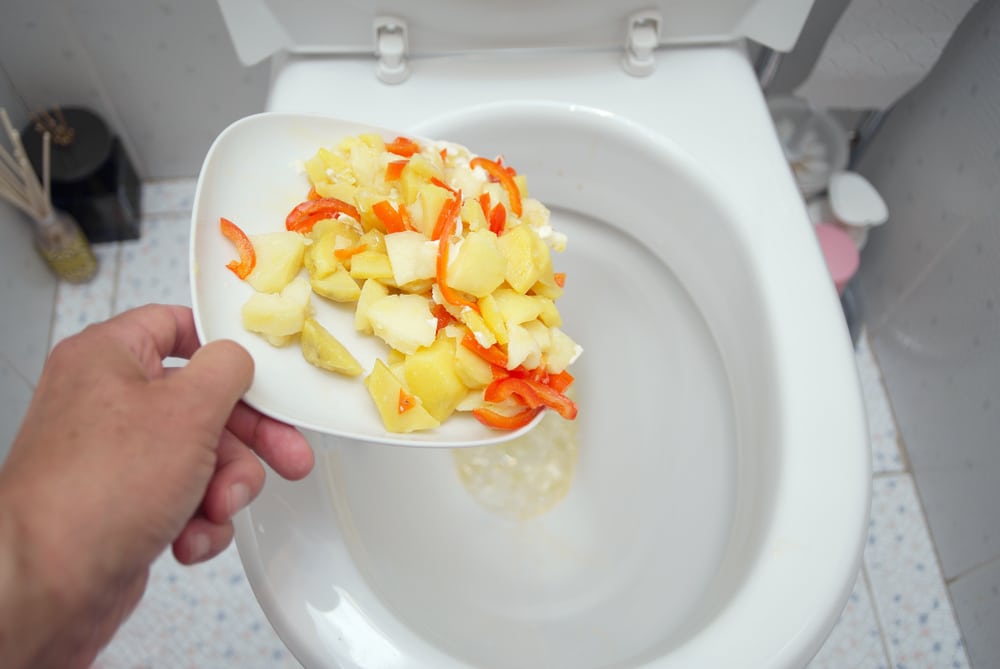Just about everyone is bound to have his or her own assumption in relation to Is it safe to flush food (especially rice) down the toilet?.

Intro
Lots of people are commonly confronted with the problem of what to do with food waste, particularly when it comes to leftovers or scraps. One common inquiry that emerges is whether it's fine to flush food down the bathroom. In this write-up, we'll explore the reasons that individuals could think about flushing food, the repercussions of doing so, and alternative techniques for correct disposal.
Reasons why people could think about purging food
Lack of awareness
Some people might not understand the prospective harm brought on by purging food down the commode. They might incorrectly think that it's a harmless method.
Ease
Flushing food down the bathroom might seem like a fast and very easy service to dealing with undesirable scraps, especially when there's no close-by trash can available.
Idleness
Sometimes, individuals might just pick to flush food out of large negligence, without thinking about the consequences of their activities.
Consequences of flushing food down the bathroom
Environmental influence
Food waste that winds up in rivers can contribute to contamination and harm aquatic environments. In addition, the water made use of to flush food can stress water sources.
Plumbing problems
Purging food can result in blocked pipelines and drains pipes, creating expensive pipes repair services and aggravations.
Kinds of food that must not be flushed
Coarse foods
Foods with coarse textures such as celery or corn husks can obtain tangled in pipelines and create obstructions.
Starchy foods
Starchy foods like pasta and rice can take in water and swell, bring about obstructions in pipes.
Oils and fats
Greasy foods like bacon or food preparation oils ought to never ever be flushed down the bathroom as they can strengthen and trigger blockages.
Appropriate disposal approaches for food waste
Using a garbage disposal
For homes geared up with garbage disposals, food scraps can be ground up and flushed via the pipes system. Nevertheless, not all foods are suitable for disposal in this fashion.
Recycling
Specific food product packaging products can be reused, lowering waste and decreasing ecological influence.
Composting
Composting is a green method to get rid of food waste. Organic materials can be composted and used to enhance soil for gardening.
The importance of proper waste monitoring
Reducing environmental harm
Proper waste administration practices, such as composting and recycling, assistance reduce pollution and maintain natural deposits for future generations.
Shielding plumbing systems
By staying clear of the practice of flushing food down the bathroom, property owners can prevent pricey plumbing repair work and preserve the honesty of their pipes systems.
Conclusion
In conclusion, while it may be tempting to purge food down the commode for benefit, it is necessary to recognize the possible repercussions of this action. By adopting correct waste monitoring methods and getting rid of food waste responsibly, people can contribute to much healthier plumbing systems and a cleaner setting for all.
FLUSH FOOD DOWN THE TOILET?
FLUSHING FOOD CAN CAUSE BLOCKED DRAINS IN YOUR HOME
All of the plumbing fixtures in your home are connected to the same sewer pipe outside of your home. This outdoor sewer pipe is responsible for transporting all the wastewater from your home to the Council sewer mains. Even small pieces of food that go down the kitchen sink can cause problems for your sewer. It should therefore be obvious that flushing larger bits of food, such as meat, risks a clog in either the toilet itself or the sewer pipes. Flushing greasy food is even more problematic because oil coagulates when it cools, coating the interior lining of your pipes.
THE TOILET IS NOT A BIN
Food isn’t the only thing that people shouldn’t be flushing down the toilet. People use the toilet to dispose of all kinds of things such as tampons, makeup wipes, dental floss, kitty litter and even underwear. Water goes to great lengths to educate residents about the high costs and stress placed on wastewater treatment systems simply from people flushing the wrong stuff down the toilet. It costs taxpayers millions of dollars each year, and homeowners thousands in blocked drain repairs.
FLUSHING FOOD IS A WASTE OF WATER
Flushing food is a waste of our most precious resource - water. In June this year Level 1 water restrictions were introduced to protect water supply from drought conditions. Much of New South Wales continues to be affected by prolonged drought with recent figures revealing up to 97 per cent of the state remains in drought. Depending on whether you have a single or dual flush toilet, every single flush uses between five and 11 litres of water. In the current climate this is a huge amount of water to be wasting on flushing food that should be placed in the bin (or better yet, the compost).
https://www.jabplumbingsolutions.com.au/blog/can-you-flush-food-down-the-toilet

Hopefully you enjoyed reading our article about Think Twice Before Flushing Food Down Your Toilet. Thank you so much for spending some time to read our article. For those who appreciated our post kindly make sure you remember to pass it around. We recognize the value of your readership.
Prices & Booking
Comments on “Are You Capable to Dispose of Food in the Toilet?”